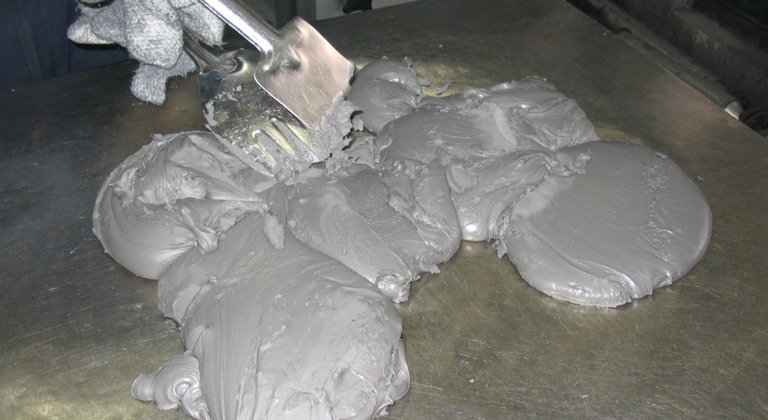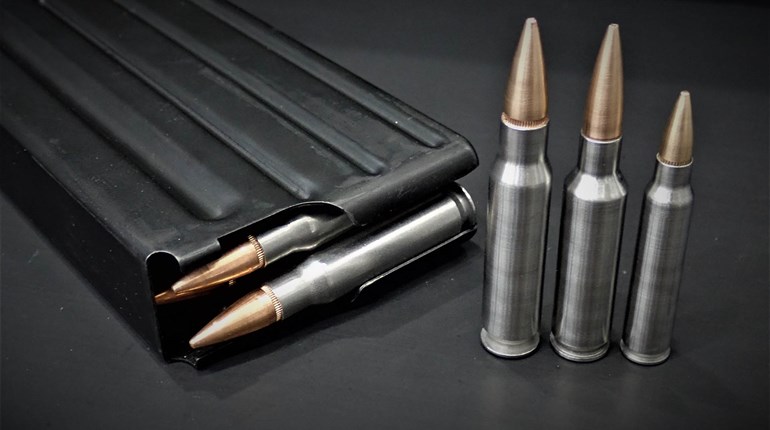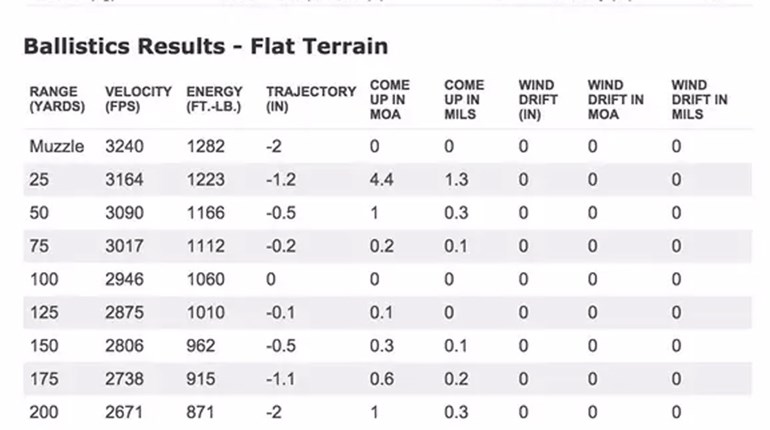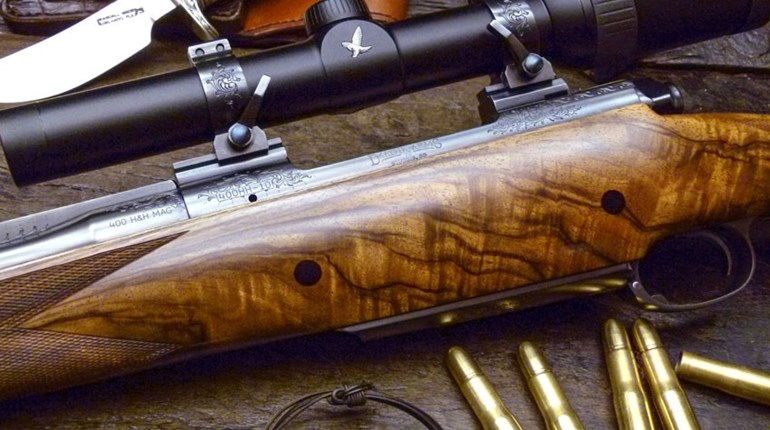** When you buy products through the links on our site, we may earn a commission that supports NRA's mission to protect, preserve and defend the Second Amendment. **

Metal Injection Molding (MIM) was developed in the 1980s as an improvement over conventional forms of metal casting. In this process, finely powdered metal particles are combined with a polymer binder, then injected into a heated mold. MIM offers several advantages to firearm manufacturers. First, it can produce a net part with a complex shape to close tolerances. Second, in most cases, a MIM part can be put into service without additional machining.
Once the metal particles and polymer binder mixture has been injected into the heated mold, it's cooled. After cooling, the part is removed from the mold, then heated (sintered) in a vacuum furnace at a temperature over 2,000 degrees Fahrenheit. The heat vaporizes the binding agent and fuses the metal particles together, creating a solid metal part having hte same mechanical properties as a part of wrought metal of the same type. Eliminating the binding agent normally causes the part to shrink 20 to 40 percent from its as-cast size. For this reason, MIM molds must be at least 20 percent oversize to allow for part shrinkage during the sintering stage.
MIM is best suited for small, complex parts that would be difficult to make with other metalworking technologies, or that would require extensive machining. Many small firearm action parts, such as hammers, triggers and levers are made from carbon and stainless steel using the MIM process.
Once the metal particles and polymer binder mixture has been injected into the heated mold, it's cooled. After cooling, the part is removed from the mold, then heated (sintered) in a vacuum furnace at a temperature over 2,000 degrees Fahrenheit. The heat vaporizes the binding agent and fuses the metal particles together, creating a solid metal part having hte same mechanical properties as a part of wrought metal of the same type. Eliminating the binding agent normally causes the part to shrink 20 to 40 percent from its as-cast size. For this reason, MIM molds must be at least 20 percent oversize to allow for part shrinkage during the sintering stage.
MIM is best suited for small, complex parts that would be difficult to make with other metalworking technologies, or that would require extensive machining. Many small firearm action parts, such as hammers, triggers and levers are made from carbon and stainless steel using the MIM process.




































